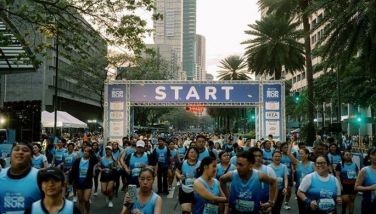Global India

NEW DELHI – As I prepared to fly out of Manila to this Indian capital the other day, the news on cable TV was that Tata Motors, maker of the world’s cheapest car, the Nano, had waded into the European compact car market with the Pixel.
The four-seater, three-meter-long diesel car (mileage 29.4 kilometers per liter), launched at the Geneva Motor Show, looks like the mini electric and hybrid cars that for many years have plied the traffic-choked streets of Tokyo. Japan is crowded with cars made by Japanese manufacturers, just as the streets of Seoul are packed with vehicles proudly made in Korea.
It’s a mixed bag in this bustling city. My taxi from the Indira Gandhi international airport was a Maruti Suzuki, made in India with Japanese partners. There are a lot of Toyotas, Hyundais, Kias and Chevrolets, plus a smattering of European luxury vehicles and those vintage Ambassador Classic black-and-yellow taxis.
As in the big cities of China, which has also started making its own cars, Indian consumers either still trust foreign brands (or those made by Indian firms with foreign partners) more than their own, or else see the established brands as status symbols.
And yet even if the Chinese aren’t scrambling to buy compact Cherys made in China and Tata Group’s billionaire chairman Ratan Tata’s Nano is not as ubiquitous in his country as he might have hoped (8,262 units sold in February), it’s fascinating to watch a country boldly on its way to taking on the global market leaders in a high-tech, highly competitive field.
This is happening in a country where poverty is pervasive and an ancient caste system remains in place.
In our country where poverty is also pervasive and a feudal system remains in place, the biggest progress in our homegrown automotive efforts so far is the electric jeepney. It’s still gaudy, noisy, and doesn’t get very far on its juice – somewhat like our country – but at least our cheap take on the war-vintage Jeep has gone green.
Meanwhile, the Indians, who for a long time were caricatured in our country as “5-6” usurers and hawkers of mosquito nets, are now selling their cars to Europe.
If I sound like I’m envious of India, yes, I am.
* * *
India is not just making its own cars but is also taking on Big Pharma. The country is our largest source of generic drugs.
India has been in the crosshairs of the drug multinationals, which accuse Indian pharmaceutical firms of unfair competition and of exploiting loopholes or violating outright rules on intellectual property rights.
The country is certainly not lacking in world-class talent in pharmaceutical R&D to develop its own drugs. It’s also not lacking in world-class talent in other fields. From Silicon Valley to international banking and finance, to medical services and PepsiCo and Britain’s Vodafone, Indian innovators and executives have made their mark and risen to the top.
In the Philippines, for example, the country manager of Citibank is an Indian. It’s a long way from the days of “5-6.”
New Delhi has invested heavily in institutions of higher learning. Some critics say this emphasis has been at the cost of neglecting basic public education, which is needed by its impoverished masses. But the country’s colleges and universities are churning out more top-rate talent and the middle class is growing along with the ranks of the super-rich like Tata.
That top-rate talent pool helped India compete aggressively when its economy was opened up in the 1990s. Instead of retaining protectionist policies, Indian businessmen embraced globalization by improving their competitiveness. Some protectionist rules remain in place, such as in banking, but for the most part India is a free market.
Tata and other Indian industrial giants have grown so much they have outpaced their country’s robust economic growth. Impatient for global expansion without having to start from scratch, they have been gobbling up companies overseas and competing with other emerging economic powerhouses. The other day, for example, Tata Steel upped its stake in Australian firm Riversdale Mining, foiling a takeover bid by Brazilian mining heavyweight Rio Tinto.
An indication of growing national prosperity is that wages here have risen so much they are making Indian companies less globally competitive, and prompting them to take their operations elsewhere.
Among the beneficiaries of Indian outsourcing is the Philippines.
* * *
Last December, Tata Consultancy Services Ltd. (TCS) opened a BPO center in Manila – its first center in Southeast Asia. The Indians are increasing their presence in the region, with a comprehensive economic partnership expected to be signed with the Association of Southeast Asian Nations by yearend following the signing of a free trade pact in September 2009.
I am here in this city, rainy the whole day yesterday, for the third India-ASEAN Dialogue leading up to next year’s summit.
The Philippines is now home to about 20 Indian BPOs, including Infosys and Wipro Technologies. Vish Iyers, TCS head for the Asia-Pacific, cited the Philippines’ “great work force” and “extremely supportive government” for the company’s move.
When our two countries celebrated 60 years of formal ties in 2009, Indian diplomats in Manila told me that their investors preferred Filipinos to Indians for call centers because Pinoy English, though with its own accent, was better understood by global clients than India’s version.
The BPOs pay well. Let’s hope the improved earnings will allow the Filipino workers to give their children quality education. This is the best way to boost national competitiveness as we embrace globalization.
During the presidential campaign last year, at least two candidates pointed to India as their model for the Philippines’ economic development. They noted that India is a democracy, with pervasive poverty and illiteracy but also with a highly educated and English-speaking segment of the population. Though secular, religion affects national life.
India faces security problems more serious than the Philippines as it skirmishes with Pakistan and battles terrorists. Security in my hotel, Le Meridien, was heavy; my taxi was thoroughly searched, my luggage went through a scanner, and I was patted down by a veiled woman at the entrance upon my arrival for check-in.
But look how far the Indians have come, and the unstoppable trajectory of their progress.
- Latest
- Trending























